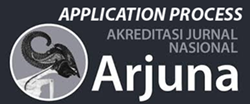Analysis Of The Level Of Satisfaction And Quality Of Excellent Service Clearance In Out At Pt. Adira Shipping Management
DOI:
https://doi.org/10.59653/jbmed.v2i01.317Keywords:
Satisfaction, Quality, Excellent Service, Clearance In/outAbstract
Excellent service is an attempt to serve the needs of others by providing the best service. This study aims to test the hypothesis that there is an influence on the level of satisfaction and quality on excellent service, whether it affects the trust obtained, the effect of the level of satisfaction obtained on excellent service and agent quality on excellent service, and the effect of satisfaction level and quality on excellent service clearance in/out. This research is a survey research. The population in this study were all ships that had been agented by PT. Adira Shipping Management. The sampling technique used purposive sampling with a total sample of 60 crew members. The data analysis technique used is multiple regression. The results showed that there was a positive influence on the level of satisfaction with excellent service clearance in/out as evidenced by the tcount of 2.189, a significance value of 0.033>0.05 and a regression coefficient of 0.266. There is a positive effect of quality on excellent service clearance in/out as evidenced by the tcount of 3.932, a significance value of 0.000> 0.05 and a regression coefficient of 0.374; and finally there is the influence of the level of satisfaction and quality on clearance in/out excellent service with a Fcount of 56.731 and a significance of 0.000 <0.05.
Downloads
References
Arli, D., & Tjiptono, F. (2014). The end of religion? Examining the role of religiousness, materialism, and long-term orientation on consumer ethics in Indonesia. Journal of Business Ethics, 123, 385–400.
Astriawati, N. (2016). Penerapan Analisis Regresi Linier Berganda Untuk Menentukan Pengaruh Pelayanan Pendidikan Terhadap Efektifitas Belajar Taruna Di Akademi Maritim Yogyakarta. Majalah Ilmiah Bahari Jogja, 14(23), 22–37.
Berger, S. (2005). How we compete: What companies around the world are doing to make it in today’s global economy. Currency.
Brachnata, T., & Wening, N. (2021). The Benefits of the Management Information System for Small and Medium Enterprises (SMEs) on the Quality Management System. Turkish Journal of Computer and Mathematics Education (TURCOMAT), 12(14), 4094–4097.
Chen, S.-C. (2015). Customer value and customer loyalty: Is competition a missing link? Journal of Retailing and Consumer Services, 22, 107–116.
Dekanawati, V., Astriawati, N., Setiyantara, Y., Subekti, J., & Kirana, A. F. (2023). ANALISIS PENGARUH KUALITAS PELAYANAN DIKLAT KEPABEANAN TERHADAP KEPUASAN PESERTA PELATIHAN. JURNAL SAINS DAN TEKNOLOGI MARITIM, 23(2), 159–176.
Fattah, B. F. B., Iswanto, I., Astriawati, N., & Widyanto, H. (2022). Prosedur Clearance In Dan Clearance Out Kapal Milik PT. Salam Pacific Indonesia Lines. Majalah Ilmiah Bahari Jogja, 20(1), 87–96.
Forwarding, D. H. L. G. (2021). Ocean freight market update. March.
Iswanto, I., Astriawati, N., Handojo, B., & Hendrawan, A. (2023). Efforts To Reduce Gaps In System And Procedure Irregularities At Ports. International Journal of Economics, Business and Innovation Research, 2(02), 58–66.
Karahalios, H. (2014). The contribution of risk management in ship management: The case of ship collision. Safety Science, 63, 104–114.
Mahaputra, M. R., & Saputra, F. (2021). Relationship word of mouth, advertising and product quality to brand awareness. Dinasti International Journal of Digital Business Management, 2(6), 1099–1108.
Merika, A., Theodoropoulou, S., Triantafyllou, A., & Laios, A. (2015). The relationship between business cycles and capital structure choice: The case of the international shipping industry. The Journal of Economic Asymmetries, 12(2), 92–99.
Muslim, A., Hanik, K., & Astriawati, N. (2022). The Effect of Plan Maintenance System and Crew Readiness on the Smooth Operation of MV. Asike Global at PT. Pelayaran Korindo Jakarta. Brilliant International Journal Of Management And Tourism, 2(3), 206–215.
Nordås, H. K. (2010). Trade in goods and services: Two sides of the same coin? Economic Modelling, 27(2), 496–506.
Porter, M. E., & Heppelmann, J. E. (2014). How smart, connected products are transforming competition. Harvard Business Review, 92(11), 64–88.
Quick, J., & Hall, S. (2015). Part three: The quantitative approach. Journal of Perioperative Practice, 25(10), 192–196.
Schellinck, T., & Brooks, M. R. (2016). Does superior service performance provided to shipping lines improve the perceived value of a port? International Journal of Shipping and Transport Logistics, 8(2), 175–193.
Sugiyono, P. (2011). Metodologi penelitian kuantitatif kualitatif dan R&D. Alpabeta, Bandung, 62–70.
Talley, W. K., Ng, M., & Marsillac, E. (2014). Port service chains and port performance evaluation. Transportation Research Part E: Logistics and Transportation Review, 69, 236–247.
Tambunan, T. (2008). SME development, economic growth, and government intervention in a developing country: The Indonesian story. Journal of International Entrepreneurship, 6, 147–167.
Wantara, P., & Tambrin, M. (2019). The Effect of price and product quality towards customer satisfaction and customer loyalty on madura batik. International Tourism and Hospitality Journal, 2(1), 1–9.
Widyanto, H., & Astriawati, N. (2023). Aktivitas Port Clearance Pengurusan Dokumen PT . Pelayaran Sumatra Timur Indonesia. JURNAL MARITIM POLIMARIN, 9(1), 7–13. https://ejurnal.polimarin.ac.id/index.php/jmp/article/view/95/33
Downloads
Published
How to Cite
Issue
Section
License
Copyright (c) 2023 Kumila Hanik, Andri Yulianto, Riza Setyo Ningrum, Atria Maharani

This work is licensed under a Creative Commons Attribution-ShareAlike 4.0 International License.
Authors who publish with this journal agree to the following terms:
- Authors retain copyright and grant the journal right of first publication with the work simultaneously licensed under a Creative Commons Attribution-ShareAlike that allows others to share the work with an acknowledgement of the work's authorship and initial publication in this journal.
- Authors are able to enter into separate, additional contractual arrangements for the non-exclusive distribution of the journal's published version of the work (e.g., post it to an institutional repository or publish it in a book), with an acknowledgement of its initial publication in this journal.
- Authors are permitted and encouraged to post their work online (e.g., in institutional repositories or on their website) prior to and during the submission process, as it can lead to productive exchanges, as well as earlier and greater citation of published work (See The Effect of Open Access).





























